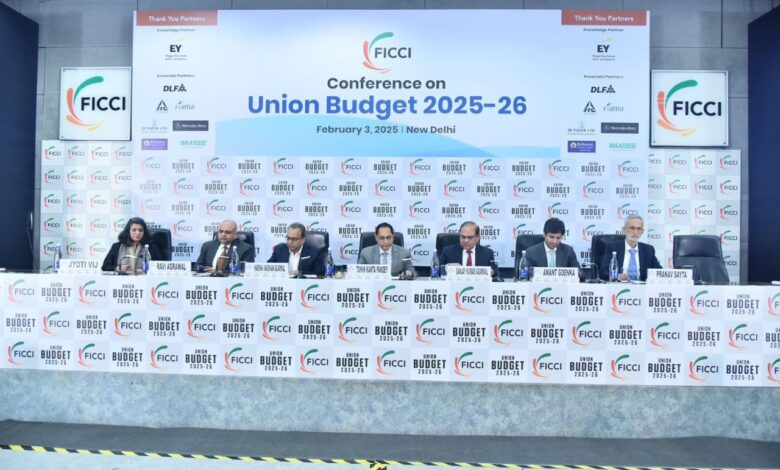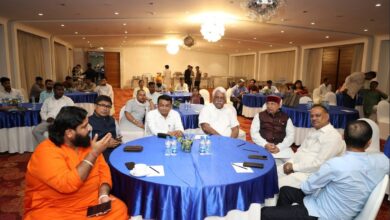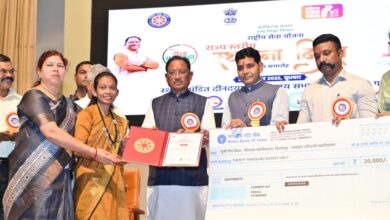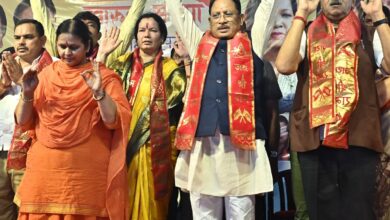It is no longer an adversarial tax department: Ravi Agrawal, Chairman, Central Board of Direct Taxes

NEW DELHI : The new budget prioritises non-inflationary growth through careful fiscal management, with the government’s entire borrowing channelled exclusively into capital expenditure, Finance Secretary and Secretary, Department of Revenue, Mr Tuhin Kanta Pandey told industry leaders today.
Speaking at a FICCI Conference on the Union Budget 2025-26, Pandey emphasised that the budget’s design ensures growth without stoking inflation pressures. “When we show the numbers, there is nothing hidden elsewhere. Our entire borrowings are going into CAPEX – nothing could be better than this. It’s a non-inflationary budget,” he said.
The capital expenditure programme of ₹15.48 lakh crores for fiscal year 2025-26 includes ₹11.21 lakh crores in direct central government spending and ₹4.27 lakh crores in grants to states for capital projects. This approach marks a significant shift from traditional patterns where government borrowing often funded revenue expenditure.
The government has exceeded its fiscal consolidation targets, achieving a deficit of 4.8 per cent against the projected 4.9 per cent for the current year, with plans to reduce it further to 4.4 per cent in the upcoming fiscal year.
The Union Budget 2025-26 tries to balance the impending challenges focusing on demand and supply side imperatives. The stimulus offered in the budget will push growth while fostering macro-economic stability, Pandey noted.
The budget returns ₹1 lakh crore to the middle class, designed to work through market mechanisms rather than direct government spending. “Whether citizens save or consume these funds, both outcomes benefit the economy – savings strengthen bank liquidity, while consumption benefits spread across industries,” Pandey explained.
Overall, the theme of the budget has been growth with fairness, trust first, give stimulus to economy and to inculcate and encourage entrepreneurship, he concluded. During the conference, Central Board of Direct Taxes Chairman, Mr Ravi Agrawal, alluded to the fundamental shift in tax administration approach, emphasising a new ‘PRUDENT’ framework: Proactive and professional, Rule-based, User-friendly, Data-driven, creating an Enabling environment, Non-intrusive administration, and leveraging Technology with transparency.
“It is no longer an adversarial tax department. It is a participative approach aimed at growth of economy and improved governance,” Agrawal said. Key initiatives include extending the updated returns window from two to four years, with about 9 million updated returns filed in the past two years generating additional tax revenue of ₹8,500 crore.
The government also announced rationalisation of TDS and TCS provisions, optimising thresholds and rates while decriminalising certain provisions. A new simplified direct tax code is expected to be presented next week, marking the first comprehensive overhaul in decades.
In addition, Central Board of Indirect Taxes and Customs Chairman, Mr Sanjay Kumar Agarwal, underlined that the government has undertaken a comprehensive rationalisation of customs duties across 8,500 tariff lines. The reform has reduced India’s average customs duty rate from 11.65 per cent to 10.66 per cent, moving closer to ASEAN standards.
“This exercise was conducted to make structures simple while ensuring competitiveness of Indian industries remains intact,” Agarwal said. The reforms include elimination of seven duty rate slabs and removal of surcharges on 82 tariff lines to simplify the tax structure. Key measures include duty reductions on critical minerals for semiconductors and clean energy, extending export periods for handicrafts from six months to one year, and customs duty cuts on frozen fish paste from 30 per cent to 5 per cent to boost marine exports. The mobile manufacturing sector, already an export success, will benefit from new duty exemptions on component parts.
On occasion, Industry leaders welcomed the budget’s balanced approach. FICCI President Mr Harsha Vardhan Agarwal called it “a blueprint for resilience, innovation and long-term economic transformation,” noting that tax relief for individuals earning up to ₹12.75 lakh per annum would enhance disposable income and spur consumption.
He highlighted that several FICCI recommendations, including improving agricultural yields in 100 low-productivity districts and launching a pulses mission, had been incorporated into the budget. “The budget demonstrates the government’s commitment to long-term economic sustainability,” Agarwal said, particularly praising initiatives in infrastructure, digital economy, and green growth.
The budget marks a decisive shift from an adversarial tax regime to one built on trust and voluntary compliance, industry leaders noted. “We continue to see a budget which is focused on tremendous macro stability,” said Mr Pranav Sayta, chairman of FICCI’s Taxation Committee. “What is most striking is that we have stuck to the course of trying to ensure our tax regime is stable and predictable,” he added, praising the move away from what he described as an “adversarial regime where the taxpayer and tax collector were always trying to suspect each other” to one that builds “immense trust and confidence in the system.”
Mr Anant Goenka, Senior Vice President, FICCI delivered the Vote of Thanks, noting that “the budget very much convinces that we are on a path towards growth along with fairness.”
Ms Jyoti Vij, Director General, FICCI moderated the discussions.







